The Monk's Way - Dale
Abbey
This page
added to site on 02 January 2005
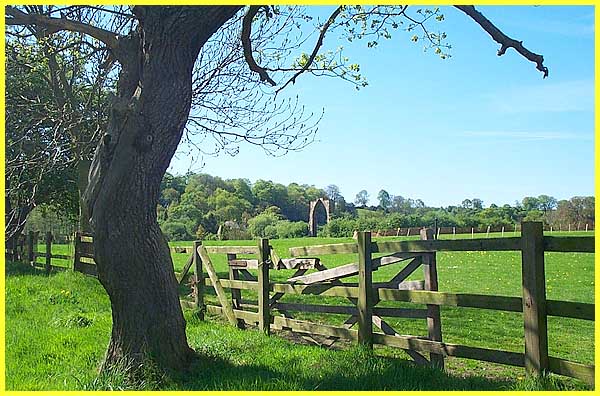
Any stones that made up the original route of the
Monk's Way between Ilkeston and Dale have long since disappeared
but they would have approached the abbey from the northeast.
Today many footpaths abound around the village and one in particular
must be close to the original route of the Monk's Way from Kirk
Hallam. The approach to reach the remains of the abbey from this
direction makes a pleasant walk across the fields.
|
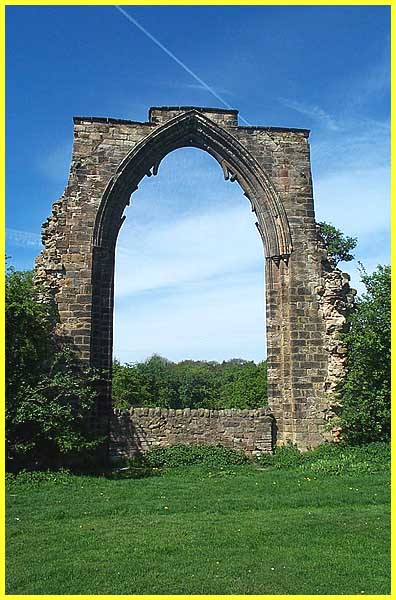
Dale Abbey as it is commonly known was founded in
about 1200 as the Abbey of St Mary but suffered at the hands
of Henry VIII in 1538, when it was dissolved, much of the abbey
being demolished. The stone from the building has been used elsewhere
in the area and some fifteenth century stained glass can now
be found about three miles away in the parish church at Morley.
The main feature that remains at Dale today is the arch of the
thirteenth century east window.
|
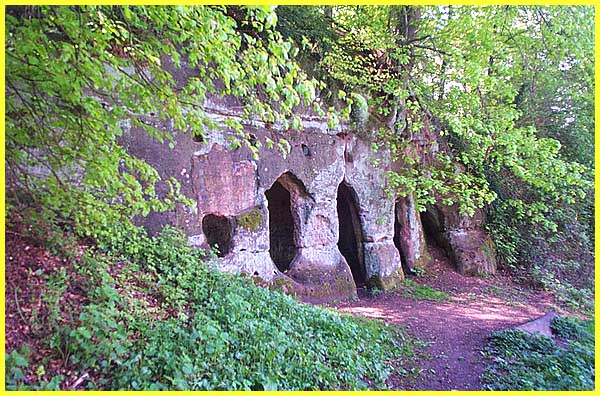
Cut into the sandstone of a nearby hillside and overlooking
the village and the abbey ruins is Hermit's Cave. It was here
that a Derby baker carved out a home and a chapel after having
a vision of the Virgin Mary to live a life of piety, prayer and
solitude, never to return to his trade.
|
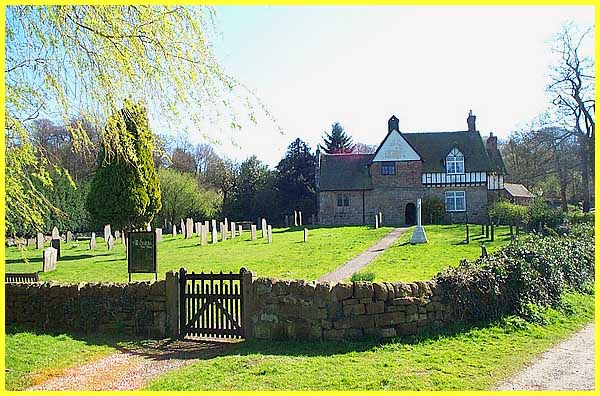
The owner of the land, a Knight, Ralph Fitz Geremund
not only allowed the hermit to stay but bestowed on him tithe
money from Borrowash Mill. The hermit built a small chapel and
home on the site of the present church, All Saints, parts of
which date back to 1150. In about 1480 the hermitage and chapel
became the infirmary and infirmary chapel for the abbey. The
semi-detached church is unique in England sharing its roof with
a farmhouse which at one time during its history was an inn.
A connecting door said to lead from ‘salvation to damnation’
between the pub and the church was blocked in the 1820s.
|
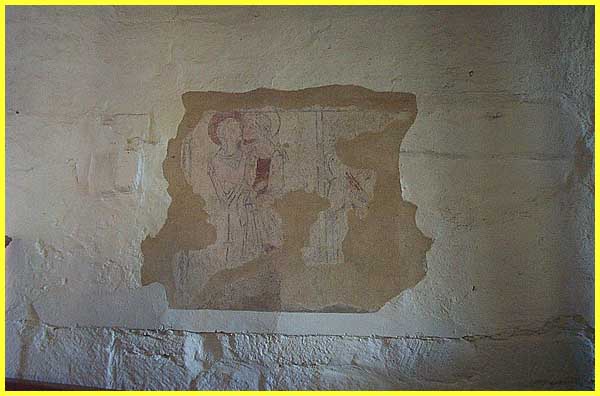
Inside the church on the north wall, a painting which
dates from the thirteenth or early fourteenth century depicts
the Visitation of the Virgin Mary to her cousin Elizabeth. The
monks whose steps we have been following along the stones of
the Monk's Way are said to have covered the walls in paintings
but this is all that remains.
|

It is perhaps fitting that we should end our journey
here in this tranquil setting. Having started at Lenton Priory
near the busy streets of Nottingham our exploration took us northwards
along an ancient route to the further priory sites at Beauvale
and Felley with a brief glance at Newstead Abbey. Returning to
Strelley on the outskirts of Nottingham, we have followed in
some detail the route of the Monk's Way via Cossall Village to
Ilkeston and seen the ancient stones that paved the way both
in situ and at the Erewash Museum. It is here at Dale though
that, for me at least, the peace and quiet still exudes the presence
of those religious men of years gone by. Visitors from afar find
it hard to believe that this quiet oasis lies just three miles
from the suburbs of the city of Derby in one direction and even
closer to a housing and industrial landscape in the opposite
direction. What is not hard to understand is why that baker from
Derby chose this spot to spend his life of solitude. We may never
know the truth behind the origin of the stones of the Monk's
Way and whether they were actually laid by monks or not, but
surely, when the exploration leads us to somewhere like this,
the journey has had to have been worthwhile.
|